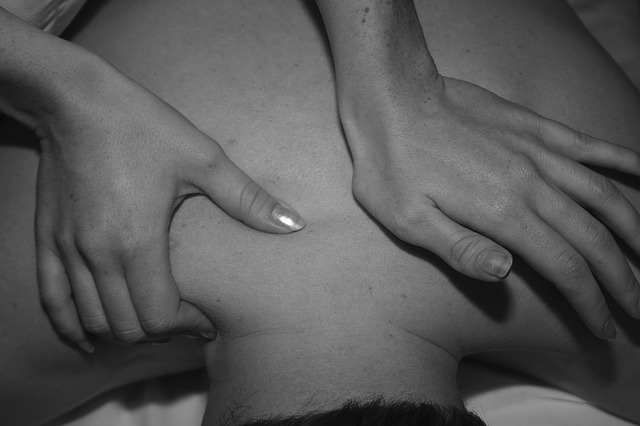Archive for March 2023
Eating for Herniated Discs
There are no two ways about it: a healthy spine begins with the nutrients you ingest on a daily basis. The great thing about nutrition is that certain ingredients can be used to target certain conditions and help different parts of the body, so you can effectively customize your diet to account for any condition you have. Herniated discs are a great example of this: the recurrent inflammation and pain involved with a herniated disc can be affected positively by a diet that incorporates anti-inflammatory ingredients and those that encourage the production and maintenance of healthy cartilage.
The anatomy of the injury gives us clues as to what to eat. A herniated disc involves the cracking of the annulus fibrosus, which is made up of strong collagen fibers. Inflammation is a part of the body’s natural healing response, but it causes a great deal of discomfort. Foods and supplements to consider are therefore in the categories:
- Vitamin C: helps the body to form collagen, which binds to and supports tissue.
- Omega-3 fatty acids: found in high concentrations in fish oil, this is a great ingredient for combating inflammation.
- Foods rich in sulfur: sulfur is an essential mineral that supports collagen production. It can be found in cruciferous vegetables, arugula, dairy, eggs, and legumes.
- Glucosamine sulfate: often found in supplement form, this compound helps the body form chemicals that repair damaged cartilage.
Healing your herniated disc requires a holistic response. At our office, we can help you find relief from the pain and stiffness of the injury through a coordinated plan that involves chiropractic adjustment, spinal decompression, diet, and exercise.
Fighting Sciatica
Few things ruin a good day like a flare-up of sciatica. The condition characterized by pain and stiffness in the lower back, aching in the buttocks, and numbness and tingling in the lower extremities can make it difficult to stand up, let alone get on with your day. The longest nerve in the human body, running adjacent to the piriformis muscle, the sciatic nerve is responsible for powering many of the muscles in the back side of the lower body, which means that when things go wrong with the sciatic nerve, the results can be serious. The most common things that contribute to sciatic nerve compression are herniated discs, impingement by the piriformis muscle and a stiff, imbalanced lower back.
Chiropractic is a perfect treatment for easing the discomfort associated with sciatica. Chiropractic adjustment and the decompression associated with spinal traction are great modalities for responding to the kind of impingement to the sciatic nerve that results from a herniated disc or a subluxation. When muscles, especially crucial ones such as the piriformis, become strained, they can also put pressure on the sciatic nerve. This kind of condition responds well to trigger point therapy, which targets specific points and releases the area from tension.
But chiropractic is only the beginning; to truly break the grip of recurrent sciatica from your life means to make a commitment to regular exercise and stretching that will keep the area free of tension on a regular basis. At our office, we are concerned with your quality of life and we would like to help you improve it without the necessity of surgical or pharmaceutical intervention.
Herniated Discs – How To Recover
A herniated disc is the logical outcome of 21st-century lifestyles which require more time spent sedentary than in any previous generation. The degree of the injury dictates the severity of treatment: while some people may incur a herniated disc without even feeling it, for others the pain is so severe as to require surgery. Most often, herniated discs will heal themselves given enough time and attention to recovery. At our chiropractic office, we offer therapy that responds to the individual when they decide the pain is too much to bear but they are not ready to consider surgery. We can help you manage and reduce pain symptoms and improve recovery time.
The human spine is made up of vertebrae and between each vertebra is an intervertebral disc, made up of two primary layers. The annulus fibrosus is the outer layer, made up of strong collagen fibers and the nucleus pulposus is a softer, gel-like inner layer that performs the shock-absorbing function within the spine. A healthy disc allows for a full range of motion and allows the vertebrae to withstand a reasonable amount of compression. Herniation is the compromise of this delicate set-up: as we age, factors such as lack of exercise, poor nutrition, persistently poor posture, and others conspire to crack the annulus fibrosus, allowing the inner layer to leak out or bulge. Pain often follows because the bulge will impinge on a nearby nerve root.
Chiropractic does not claim to be a panacea for herniated discs. Our treatment does not correct the actual tear; instead it support’s the body’s natural attempt at healing itself. With modalities such as chiropractic adjustment and spinal decompression, we can help reduce the severity of pain and inflammation so that you can focus on eating well and exercising lightly until it is healed. If you are still considering surgery, improvements in pain and mobility from chiropractic care serve as good indicators for success post-surgery.


